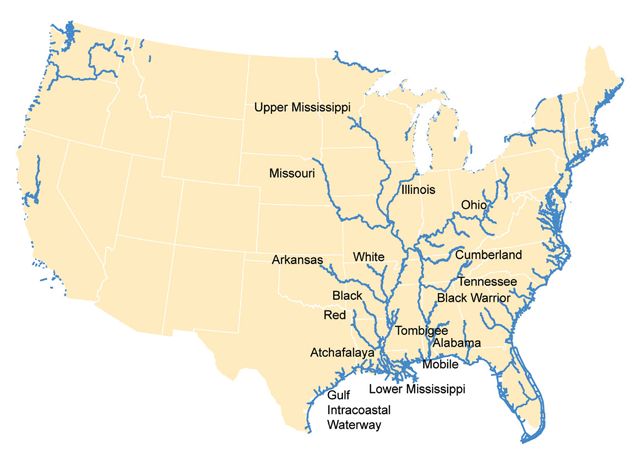The content of this website is no longer being updated. For information on current assessment activities, please visit http://www.globalchange.gov/what-we-do/assessment
Navigable Inland Waterways

Inland waterways are an important part of the transportation network in various parts of the United States. For example, these waterways provide 20 states with access to the Gulf of Mexico.1 As conditions become drier, these main transportation pathways are likely to be adversely affected by the resulting lower water levels, creating problems for river traffic. Names of navigable rivers are shown above. Image Reference: CCSP SAP 4.71
References
- 1. a. b. [217] Kafalenos, R. S., K. J. Leonard, D. M. Beagan, V. R. Burkett, B. D. Keim, A. Meyers, D. T. Hunt, R. C. Hyman, M. K. Maynard, B. Fritsche et al. "What are the Implications of Climate Change and Variability for Gulf Coast Transportation?" In Impacts of Climate Change and Variability on Transportation Systems and Infrastructure: Gulf Coast Study, Phase I, edited by M. J. Savonis, V. R. Burkett and J. R. Potter, 4-1 to 4F-27 [104 pp.]. Vol. Synthesis and Assessment Product 4.7. Washington, D.C.: U.S. Department of Transportation, 2008.
Summary
| High-resolution | High-resolution JPEG |
|---|